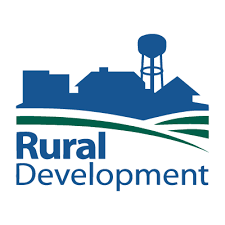
USDA Office of Communications
WASHINGTON, Oct. 16, 2019 – U.S. Department of Agriculture (USDA) Deputy Under Secretary for Rural Development Donald “DJ” LaVoy today announced that USDA is investing $201 million to improve rural water infrastructure in 31 states (PDF, 250 KB).
“Modern, reliable and accessible infrastructure is critical to economic development and quality of life,” LaVoy said. “Under the leadership of President Trump and Agriculture Secretary Perdue, USDA is committed to partnering with rural communities to help them improve their infrastructure, because when rural America thrives, all of America thrives.”
USDA is providing the funding through the Water and Waste Disposal Loan and Grant program. Eligible applicants include rural cities, towns and water districts. The funds can be used for drinking water, stormwater drainage and waste disposal systems in rural communities with 10,000 or fewer residents.
USDA is announcing investments today in Alabama, Arkansas, Arizona, California, Colorado, Florida, Iowa, Illinois, Indiana, Kentucky, Maine, Michigan, Missouri, Mississippi, Montana, North Carolina, North Dakota, Nebraska, New Jersey, New Mexico, New York, Oklahoma, Rhode Island, South Carolina, Texas, Utah, Virginia, Vermont, Washington, Wisconsin and Wyoming.
Below are examples of projects announced today.
- Bessemer City, N.C., is receiving a $4.9 million loan and a $3.2 million grant to improve its water treatment plant and related facilities. The city will add 1,290 linear feet of water line and 2,375 linear feet of gravity sewer line. It also will install 12 manholes along an unstable stream bed to replace the deteriorated sewer line. The improvements will increase the reliability of the water treatment process and improve water quality.
- The Village of Maine, Wis., is receiving a $515,000 loan and a $965,000 grant to upgrade the wastewater collection system. Deteriorating manholes will be repaired or replaced, and the Everest Avenue lift station will be relocated. Sewers on the east side of the village will be replaced with new PVC piping, and the manholes will be replaced with ones made out of precast concrete. These improvements will significantly decrease infiltration and inflow into the collection system.
- The town of Barre in Orleans County, N.Y., has been approved for a $500,000 loan and a $601,000 grant to extend public water service to 31 residential customers who have wells that lack safe, potable water. Installing water mains will provide reliable water service to the residents as well as adequate fire protection.
USDA awarded nearly $1.8 billion for Water and Environmental Program loans and grants during fiscal year 2019. View the interactive RD Apply tool or contact one of USDA Rural Development’s state or field offices for application or eligibility information.
In April 2017, President Donald J. Trump established the Interagency Task Force on Agriculture and Rural Prosperity to identify legislative, regulatory and policy changes that could promote agriculture and prosperity in rural communities. In January 2018, Secretary Perdue presented the Task Force’s findings to President Trump. These findings included 31 recommendations to align the federal government with state, local and tribal governments to take advantage of opportunities that exist in rural America. Increasing investments in rural infrastructure is a key recommendation of the task force.
To view the report in its entirety, please view the Report to the President of the United States from the Task Force on Agriculture and Rural Prosperity (PDF, 5.4 MB). In addition, to view the categories of the recommendations, please view the Rural Prosperity infographic (PDF, 190 KB).
USDA Rural Development provides loans and grants to help expand economic opportunities and create jobs in rural areas. This assistance supports infrastructure improvements; business development; housing; community facilities such as schools, public safety and health care; and high-speed internet access in rural areas. For more information, visit www.rd.usda.gov.
